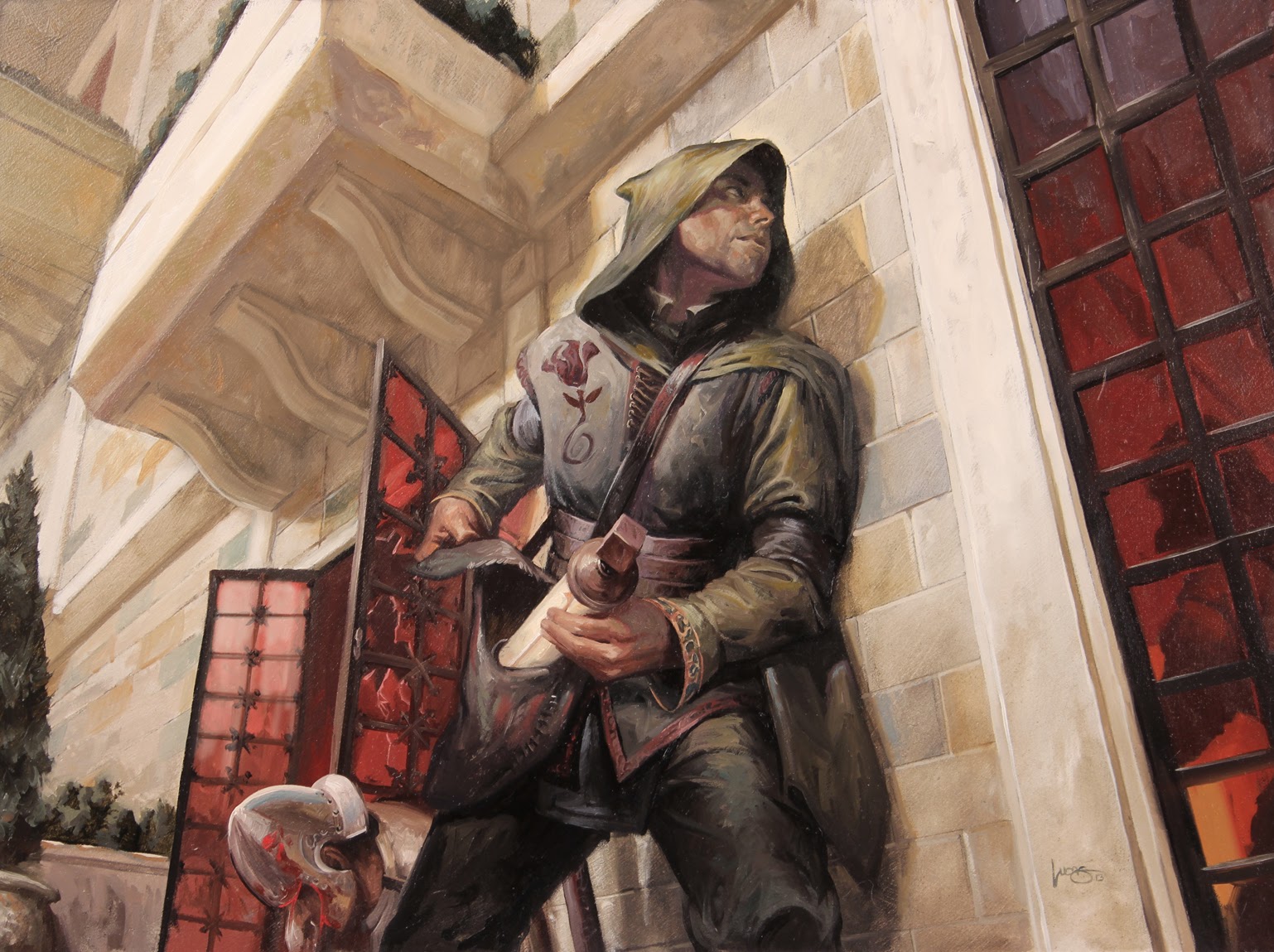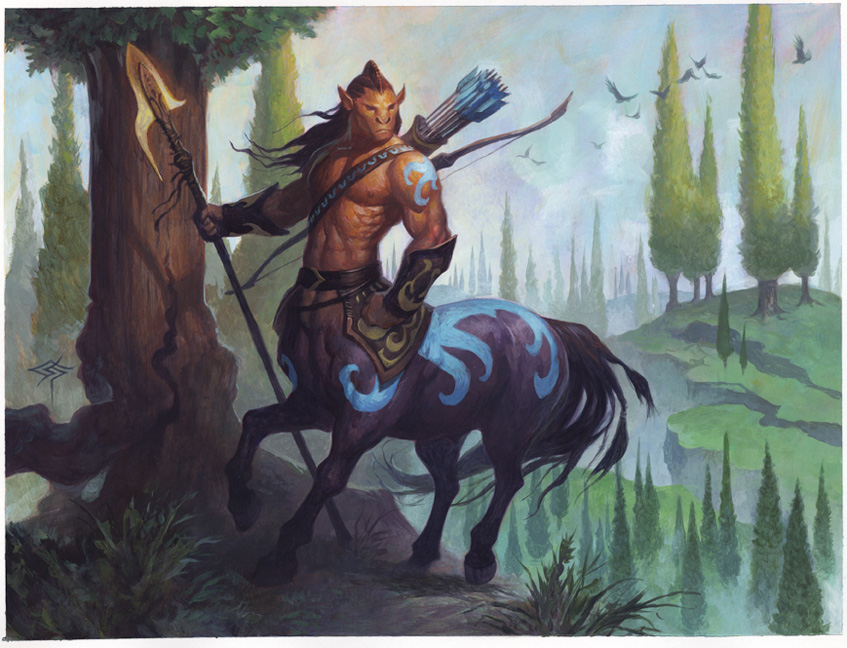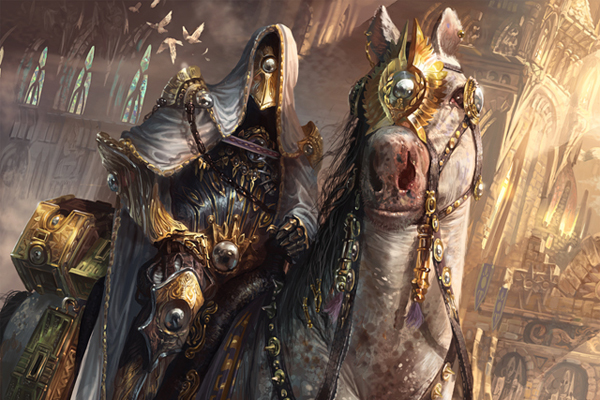By: Jared Yost
Now that Conspiracy is fully spoiled and the first drafts have started firing from the set, I’d like to share with you all what I will be watching moving forward from this set. It won’t be anything besides foils, at least for now.
Here’s my thinking – why do I care about non-foil prices of a product like this when it can just be printed into oblivion like Commander 2013? Remember when our good friend True-Name Nemesis was $50+ when Commander 2013 was released? That sure didn’t last very long. It took an especially huge nose dive when Wizards announced that they would be cutting a random Commander deck in the next wave of the products to make way for two of every Mind Seize for every other one of the other Commander 2013 decks that were released in the new wave. I bought two sealed boxes of the Commander 2013 product first wave (that’s two of each deck) and I’m honestly not sure if that was a good purchase looking back on it now. I have no idea how long it is going to take for those decks to rise past the point that I purchased them at – there are so many of them out there now that the market has become fully saturated with no end to that saturation until the next product. I have a feeling I’m going to be holding onto them for a long time before I can resell them.
I predict that Conspiracy sealed product will be following a similar trajectory. If this product even shows a whiff of popularity, you can bet your Mox Emerald that we’ll be seeing wave after wave after wave of these boxes. I would stay away from Conspiracy sealed product for some time as Wizards has proven with Commander 2013 that they have no problem with mass printings of a product when there is demand in the market.
What isn’t really affected by these mass reprints? Foils. Therefore, foils from Conspiracy will be best to target since mass reprints of the set (which is fairly large coming in at 210 cards) will hardly even budge many of these prices for the first year, and beyond that they will only continue to gain value since the set certainly isn’t lacking unique cards. A few have even seen their first foil printing like Exploration.
However, sometimes foils can drop in value as demand dries up for the first few months to a year after the product has been released. This is because the people that want the foils get them, and then there isn’t any demand for the foils until a new crop of players comes along looking for them. Once this period is over the foil prices will start creeping back up again.
Let’s take a look at the MTGPrice listing for the top 25 foils by value in the set. These are the foils that will see movement one way or another.
Dack Fayden – Surprisingly the first foil on the list is one that you should watch out for. Not in a good way – in a “If this guy doesn’t put up any results over the next few months, abandon ship!” kind of way. Does anyone know if Dack Fayden is even any good at this point? I haven’t seen any decklists that utilize him yet in Legacy or Vintage. It could be too early to tell but I’m not going to hold my breath. His abilities are cool though they don’t really provide an end game like Jace, the Mind Sculptor or Liliana of the Veil.
Brainstorm – Here’s a foil we can all get behind! There are several foil printings of Brainstorm already available to the MTG populace but giving us another definitely won’t hurt, especially with that awesome new art. Don’t get me wrong, I love the first foil version’s Masques art yet the new Izzet themed Brainstorm is great as well! This is the first time that this art has had a foiling so I expect this foil version of Brainstorm to maintain its value and then continue to gain value as the years go on. Actively trade for these copies when you can.
Exploration – A first time foil and found as a playset in a well known Legacy archetype? Sounds like a recipe for a winning pick up. Years down the road, players will wish that they were able to pick up these foils for $60 – however, in the short term I could see this price dropping a bit. Once the players that want these foils pick them up, since the Lands Legacy archetype isn’t a popular choice (you can thank Tabernacle’s insane price for that) and casuals have their fix for EDH the price could easily dip down for a bit while demand is low. Once the dip happens, that will be the time to move on these foils. As these foils continue to sit in people’s EDH and Legacy decks without moving back into the market, the price will re-adjust itself accordingly and I can definitely see these hitting $100 and continue to trend upwards once they become really hard to find.
Council’s Judgment – Ahem, I’ll have to reserve judgement about this particular sorcery’s foil price until I start seeing some TNN’s being exiled with regularity in Legacy. LSV puns aside, $60 for foils of this while normal copies can be had for as low as $8 on TCGPlayer seems greedy. This ain’t Abrupt Decay. It can be countered, costs three mana, requires a heavy commitment to white to cast, and is a sorcery – four serious strikes against it in a format defined by counterspells. Golgari Charm feels better than this most of the time. Maybe I’m severely underestimating this card but you won’t see me buying this for $60 foil.
Stifle – $50 for a foil that has been printed in foil twice already? And we’ve already had a foil printing of this art before in the form of a judge promo? No thanks, I think I’ll pass on this one. There isn’t a reason that this particular foil version will continue to go up and it has every reason to decline in value once more Conspiracy is opened – just like Commander 2013 there will be no end to this product for quite a while, so I expect this foil to be one of the foils that drops in price over time.
Misdirection – Similar to Brainstorm, we haven’t had a Misdirection foil since Masque’s block and we’ve got new art to boot as well. The new art is pretty badass, and even though the old art is iconic I can definitely see players wanting to get their hands on some Conspiracy foils of this card. $48 is a bargain compared to the $140 it will cost you for a Masques foil. In the long term, this price will probably only continue to go up as it seems that Misdirection will have a place in Legacy as long as Sneak and Show exists in the format. Barring any bannings, such as Show and Tell and/or possibly Sneak Attack being banned, expect this foil version of Misdirection to go up over time. Speaking of which, judge foil Show and Tells feel very underpriced to me – they are almost the same price as the regular copies!
Marchesa, the Black Rose – “I’m not even sure if this card is even good in commander.” I thought to myself at first. The thing with Marchesa is that you need to look past the Dethrone stuff, which honestly isn’t going to be that relevant all the time (when is Grixis ever an aggro deck?) and instead focus on that last line of text. “Whenever a creature you control with a +1/+1 counter on it dies, return that card to the battlefield at the beginning of the next end step.” That’s sweet, pretty much constant recursion of your creatures if you build a deck around +1/+1 counters with her! Is it $44 sweet for the foil version though? Honestly, I think the answer is probably. She is in popular commander colors in addition to being a great attrition commander. I’m not sure if that $40 mark will budge for a quite a while (and if it does it won’t go down that much) and I believe in the long term you only stand to gain with a foil of her. She’s also mythic which helps to maintain the high foil price.
Pernicious Deed – For a $35 foil, you aren’t getting a bargain but you could do worse. Deed already has two foil printings and this one keeps the old art with a new border? Not sure if I like that combination. At least with the judge promo they recreated the art to better match the updated card border for multicolored cards. I don’t think the new card border looks good with the old art, though that could just be my nostalgia kicking in since I started playing when Invasion was legal in Standard and Deed is a fond memory from that era. Regardless, I don’t think I want to be picking up foil deeds of this variety right now. I can’t see the foil price increasing long term and it can only go down in the short term.
Muzzio, Visionary Architect – I foresee this guy replacing a lot of Arcum Dagsson’s as commander so that players will be less inclined to think that you are going to combo off on them at any given moment if you’re currently running an Arcum commander deck. Muzzio was a great way for R&D to design a new Arcum without making it busted – he is powerful in his own right but there is a still a randomness to your artifact selection which nerfs most combo shenanigans. Speaking of Arcum Dagsson, foil versions of him can be had for $25 – cheaper than Muzzio is currently. I recommend you stay away from foils of this card for a while until he at least matches Arcum in price or even falls a little bit lower than him.
Reflecting Pool – I’m not sure if I am a fan of this foil at $30. It’s not really played in Modern or any other eternal formats, so its demand comes strictly from commander. There are already Shadowmoor foils out there for Reflecting Pool at $70, so like Deed you can get the bargain foil from Conspiracy if you wish. Unfortunately I wouldn’t really expect this to rise in price for quite a long time, if ever.
Scourge of the Throne – I’m not really a fan of this card. No haste, Dethrone (not a thrilling ability outside of casual and Commander), and requiring you to attack the highest life total to take another combat phase during your turn seems underwhelming to me. However people will collect this card simply because it is a dragon, so maybe my impressions of the card have nothing to do with how awesome it might be to the casual crowd – maybe $30 for a foil of this will be a bargain several years down the line. I’m not going to actively pick up foils of this but if someone offers me the right price I’m not going to turn it down.
Mirari’s Wake – See my review for Deed and Reflecting Pool. Another card with some foil printings that won’t be moving in price any time soon. I would not pick up this foil expecting it to go up significantly over time.
Basandra, Battle Seraph – Similar to Scourge of the Throne, I expect this to maintain value purely due to being an angel. Casuals love their angels and people collect them, especially foil versions. Basandra isn’t that powerful yet this is the only foil version of her, so the price will reflect that accordingly.
Hydra Omnivore – This guy is insane in commander and will be a great target for foil. The non-foil version from Conspiracy is $5 which is significantly lower than the commander counterpart. I think its odd that they reprinted it at mythic even though it was only a rare in the Commander set. Regardless, since this is the first foil version of the card it will command a premium like Basandra. Unlike Basandra, this foil has a chance of taking off as the years go on because it packs quite a punch.
Brago, King Eternal – In my opinion he is only a marginal commander. Even if he is in your commander deck, his stats are pretty underwhelming for something that needs to attack and deal combat damage in order for his effect to go off. His nonfoil version is only about $1.50 on TCGPlayer. I would stay away from this foil for a while and wait for it to dip down a bit.
Rout – Since this has brand new art, and the art happens to center around Elesh Norn, I predict that many people will want the foil version of this art simply because they are fans of Elesh Norn. It is sitting around $20 right now, which I think is a fair price for a card that is really good in commander. It has the chance to dip down in price once the casual crowd has fulfilled their demand for the time being (the first year the product is out) but over time the foil version featuring this art could become quite collectable.
Coercive Portal – Even though it says that this foil is $20 on the sheet, I’ve checked on TCGPlayer and the foils are basically all sold out already. There were two listings left on Friday and they were at $50 and $220 respectively… hmm, what is going on here? Did someone find some tech for Legacy MUD decks that they want to utilize? Is this a better version of Nev’s Disk and/or Staff of Nin? I guess if you were able to buy the foil for $20, congrats you’ve made a killing on the price jump. I don’t think it’s staying there though. With regular copies being listed for around $2 on TCGPlayer I don’t see how this foil can be over $50 already so quickly. Wait for the hype spike to die down before trying to get foil copies of this.
Swords to Plowshares – Even though Swords has several foil printings already (judge promo, FTV 20, and FNM) the Conspiracy foil will be the first with the latest art that isn’t in the FTV foiling style. This will appeal to many players as the new art is quite awesome even if it isn’t Jeff Menges – Terese Nielsen is just as good, if not better right? $20 is a good starting point but I would expect this to climb higher as the years go on. Swords is always a solid card, just like Brainstorm, so foil copies whatever they look like will always be sought after.
Grenzo, Dungeon Warden – Grenzo is probably the most unique B/R card designed since Cauldron Dance. First of all, he is a B/R creature with an X in it’s mana cost – the first time something like this has been designed. Second, his activated ability is weird yet powerful. It makes your opponents think twice before casting Hallowed Burial or Terminus – or even Spell Crumple! Grenzo will break your guys free from the bottom of your library and put them right back into play. Price wise, at $19 for foil it seems a bit expensive at the moment. Wait a while for Conspiracy to continue to be released. Once his foil drops a bit then it will be the time to pick him up since his effect is so unique.
Altar of Dementia – A first time foil and a great casual card, Altar of Dementia foils will be sought after by those trying to foil out commander decks. I feel that $16 is a pretty fair price and that it will only go up over time. Once the foils start increasing, I could definitely see this going up to $40 and even surpassing it one day.
Dack’s Duplicate – A very unique twist on Clone. I love this card! Copying a creature with haste and Dethrone is no joke, all for that R in it’s mana cost. This is a great Clone variant and will be sought after for years to come. $15 seems like a great deal for foils of this, so I would look to pick up a few copies for your EDH decks and not let them go.
Edric, Spymaster of Trest – Edric is an awesome commander, but being banned from Duel Commander really stifles the price. $15 is pretty good for foil versions since Commander Arsenal versions are around $20. I can foresee this version hitting $20 over time and probably even going past it once the CA version starts to pick up steam. If you don’t have a foil Edric by now, I would pick him up as I don’t think over time he is going to get any cheaper.
Selvala, Explorer Returned – I’m not a huge fan of this card as I don’t feel it does anything spectacular. It’s no Rofellos and requires white mana to generate a bunch of green mana which is awkward. I like the life gain, however letting everyone draw a card seems kind of bad in G/W. $15 feels like too much, wait a bit for it to drop in price and then go in on the foil if you want her.
Magister of Worth – A great casual card, but the promo is really going to hurt the regular foil price for quite some time. Don’t get in on this foil for a while if you want a Conspiracy foil version. Instead trade it into another foil like Muzzio or Grenzo which are sure to go up over time.
Phage, the Untouchable – She is a reprint foil like several others on the list, so I would recommend picking this foil up only if you are looking for a bargain and not looking to make a profit on her some day. She’s only a collector’s item at this point as she can’t be a general and is really hard to get into play in a casual game. I’d rather have the original Legion’s foil as it is only $4 more.
Foils Abound
I think that looking at foils from Conspiracy will be much better in the long run than looking at non-foils simply because the price of all the non-foils will be severely depressed by the wide distribution of this product. My predictions could be severely off if this product is nowhere near as popular as everyone predicts, in which case if you decided to pick up regular copies of cards you would have made more money in the long run than picking up foils. However, I do think the product will be very popular and will be drafted for quite a while by casual players that make up the majority of the MTG population.
There are both competitive and casual foil targets that can be acquired that I think will only keep going up in the future. Conspiracy is an awesome set, and if Wizards decides to do something like this again then this first generation Conspiracy could even hold value based on being an original – just like the first Commander product and Duel Deck product command a premium. Only time will tell!




